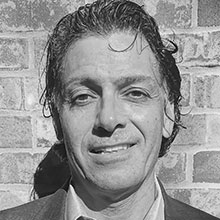SARS-COVID-19 of 2020 has been the modern-day death angel. The unofficial death toll is 6.9 million people worldwide which is twice the official number. Politics aside, that is the short story. (1) However, the longer journey is for those persons who were infected but did not die – not the ones who fully recovered but the ones that continue to suffer: the “Long Haulers” (AKA: post-COVID-19 syndrome, “long COVID-19,” post-acute sequelae of SARS-CoV-2 (PASC) or the post-COVID-19 conditions).
But before we get into this condition, let us first try to understand what the virus does throughout the body. It first enters and attacks the upper airway, which is the point of entry, the nose and mouth with an affinity for the lungs; then, it attacks the whole body. SARS is the technical name of the virus which stands for Severe Acute Respiratory Syndrome.
Inflammation
(2) Inflammation is the body’s defense response when it is injured or attacked in any way. Technically, there are four parts of the inflammatory response; these responses, as taught in medical school, are, in Latin: rubor, dolor, calor and tumor, meaning redness, pain, heat (and fever), and swelling. These are most evident when there is a problem on the surface of the body such as the skin. As an example, a mosquito bite causes inflammation. It results in swelling, redness, pain, itching, and heat over the bite site. The same is seen from a fall, an impact to the body, diseases, and other abnormalities, e. g. the flu.
However, inflammation also occurs within the body with any kind of problem, diseases, chemical reaction or whatever e. g. cancer, infections, (viral, bacterial, parasites, etc.) and most other responses that are adverse events in the body. As an example, one of the most damaging diseases causing inflammation throughout the body is diabetes.
The process of inflammation is controlled by the immune system and all its biological weapons that protect the body with white blood cells, antigen-antibodies responses, a cancer defender called tumor necrosis alpha that kills tumor cells, T-cells (and many other cells), and a big category of weapons called proinflammatory cytokines. We will stop there because it is far too complex for this article. Each weapon is different and defends the body in different ways, including the production of chemicals that cause fever, mucus production, and swelling. All these mechanisms are attempting to destroy and correct what is wrong, what is attacking or what is invading the body, including cancers. (1)
COVID-19 Response in the Body
Simplistically, COVID-19 has an affinity for the lungs but then causes an overreaction of the entire immune system throughout the body especially by the proinflammatory cytokines. It produces scarring (fibrosis) of the cells and tissues it affects. Fibrosis makes the tissues stiff and decreases their responsiveness. This is how it makes people sick or causing them long term damage. What we must understand is that in the body’s attempt to protect itself, the COVID-19 virus causes the body to markedly overreact.
Consider the four components of inflammation: the virus causes each of them to go into overdrive, in every organ, starting with the lungs. It is known as the “cytokine storm.” (1) Fevers are in overdrive, swelling throughout the body in the tissues, cells, blood vessels, the air sacks of the lungs, the alveoli – where there’s so much fluid accumulating, due to the inflammation, the alveoli begin to fill with fluid. The infected persons, literally, start to drown. This overwhelms the lungs and is called adult respiratory distress syndrome (ARDS) which results in the need for a ventilator.
“Long Haulers”
Why Long Haulers suffer extended symptoms is unknown. It is seen in patients who had mild infections as well as those with severe cases. However, over time the immune system’s white cells’ ability to fight declines but the proinflammatory cytokines remain super active causing these types of long-term symptoms: (2)
- Fever
- Fatigue
- Loss of smell or taste
- Depression or anxiety
- Joint pain
- Fast or pounding heartbeat
- Shortness of breath or difficulty breathing
- Cough
- Dizziness when standing
- Chest pain
- Memory, concentration, or sleep problems
- Muscle pain or headache
Organ Damage
The conditions and circumstances of the COVID viral infection – whether mild, moderate, or severe – is the setup for people who were exposed to have the long-term effects. Damage is done on the cellular and subcellular levels. The combined effects of the fibrosis and alterations in immune system function is throughout the body. When tested, these persons no longer have any active virus in their bodies. The organs affected mainly are the lungs, heart, brain, skin, and kidneys. Below is summarized the main organ effects. (2)
Lungs: Shortness of breath (SOB) is experienced, and patients get winded easily with exertion. These can be resolved over time with respiratory therapy.
Heart: There is long-lasting inflammation of the myocardium (heart muscle and myocarditis) which may cause fatigue, irregular heartbeats, SOB, and rapid heartbeats.
Kidneys: Fibrosis occurring in the kidneys will affect blood pressure and cause anemia because of fluid retention and the kidney’s role in the blood formation. (3)
Multisystem inflammatory syndrome: This is a condition primarily seen in children where their organs – brain, lungs, heart, GI tract, kidneys and skin – show signs of generalized inflammation manifested by swollen and inflamed organs. (4) It is beginning to be seen in adults.
Treatment
The greatest course of treatment is time. However, managing the condition of each organ is also important. This means teaming up with your healthcare provider to get you through this difficult time. Let’s not put aside things you can do yourselves to help support the process of healing. For this, one should lean on the Functional Medicine approach to wellness.
Functional Medicine (FM) Support
FM is a patient-centric model of healthcare where one searches for the root cause of disease, then approaches the findings by using non-medicinal means – foods, nutraceuticals, and supplements, if possible. This should supplement the treatments by your healthcare provider. Time and space do not allow for us to take a deep dive at this point. But above, a brief overview was provided for the mechanism of this PASC condition, in two words – cellular damage. This is where there’s tremendous damage in all organ systems. A holistic approach from the patient’s perspective is to reduce the amount of inflammation occurring in the body. One of the key complaints these patients suffer from is fatigue that comes from the loss of the cells’ ability to produce energy. Below is a table that shows you what can be done to support yourself should you suffer from PASC. It approaches this from four different categories and suggests for each what you can do.
| ENERGY | RECOVERY | IMMUNE SYSTEM | PSYCHOSOCIAL: SDOH* |
| Daily Intermittent Fasting (all meals eaten within 10 hrs/day) | Foods: w/ lots of color: fruits and veggies; Green tea. | Prebiotics | Medical Care Management: fully integrated management of disease |
| Cold Showers | Vit D3 (5,000 IU/day) | Probiotics | Autonomy: independently care for oneself |
| Exercise 3 x per Wk (gradual increases) | Zinc gluconate (30-50 mg/day) | Avoid Toxic Exposures | Self-reliance: mobility, hygiene, eating, etc. |
| Supplements**: d-ribose (5mg/day); Co-Q10 (300 mg/day) | Selenium (200 mcg/day) | Vitamins D & A (10,000 IUs per day) | Safety: eliminating those issues that can increase harm |
| Sleep: add Melatonin if needed (1-10 mg, 30-60 min. before sleep) | Look up the Gut-Microbiome-brain Axis for gut health. | Economics: one’s financial capability to access care, which includes transportation, medication, etc. | |
| Medicinal Mushrooms: Maitake, Shiitake. | Burden of Care: any caregivers and/or family members that provide supportive services and | ||
| Exercise 3 x per Wk (gradual increases) | Quality of Life: being happy and having dignity in one’s life and lifestyle. |
*Social Determinants of Health. **Supplements are vitamins, minerals, herbs, and many other products that come as pills, capsules, powders, drinks, and energy bars. ^Nutraceuticals are foods or food ingredients that prevent and treat diseases.
Countering Inflammation
As mentioned, one of the major problems caused by COVID-19 is the overwhelming inflammatory response created by the virus. It is more excessive than what the body needs, thus, this defense mechanism begins to cause harm to its host. From a personal perspective, it is important to give yourself every consideration to reduce this. Several nutraceutical^/supplements** are discussed with a little more attention than those in the above matrix.
Briefly, and without in-depth discussion, these nutraceutical/supplement anti-inflammatories do the following: they inhibit, downgrade, or block most, if not all, of the inflammatory reactions. The names of some of these reactions are mentioned below, just to give you an idea of the types and the number of inflammatory chemicals and reactions there are:
- NF-κB, blocking the overexpression of tumor necrosis factor
- Interleukin-1, downregulation of the overexpression of cell adhesion (stickiness) molecules
- Inhibiting phospholipase A2, COX-2, lipoxygenase, iNOS, myeloperoxidase
- Inhibiting reactive oxygen species (ROS) generating enzyme activity and increasing ability to scavenge ROS. ROS are chemical molecule reactions due to their oxygen atom components. Biologically, ROS damages DNA, cell membranes and other components of cells.
Natural Anti-Inflammatories: (6)
- Curcumin (the spice curry) from the spice turmeric (100–500 mg daily).
- Fish oil supplements contain omega-3 fatty acids. Two main beneficial types of omega-3s are eicosatetraenoic acid (EPA) and docosahexaenoic acid (DHA) (1-2 grams/day).
- Alpha-lipoic acid is a fatty acid made by your body; it is important in metabolism and energy production. (300–600 mg daily)
- Ginger root in powdered form. (1 gram daily, but up to 2 grams is considered safe)
- Resveratrol, an antioxidant found in grapes, blueberries and other fruits with dark skin of purple or reddish colors. (150–500 mg per day)
- Spirulina is a type of blue-green algae. (1–8 7grams per day)
None of these should interfere with any medications and may expedite your recovery. Also, try to find a clinic that specializes in treating Long Haulers; they are springing up all over the country.
We specialize in treating seniors and the chronically ill. Contact us to schedule an appointment.
Citations:
- IHME. COVID-19 has caused 6.9 million deaths globally, more than double what official reports show. http://www.healthdata.org/news-release/covid-19-has-caused-69-million-deaths-globally-more-double-what-official-reports-show
- Mayo Clinic Blog, COVID-19 (coronavirus): Long-term effects. https://www.mayoclinic.org/diseases-conditions/coronavirus/in-depth/coronavirus-long-term-effects/art-20490351
- CDC, Post-COVID Conditions. Updated Apr. 8, 2021; https://www.cdc.gov/coronavirus/2019-ncov/long-term-effects.html.
- CDC. Multisystem inflammatory syndrome. https://www.cdc.gov/mis-c/index.html
- James Carter. IFM Webinar. COVID-19 Cardiovascular Therapeutic Recovery. May 2021. https://www.ifm.org/news-insights/covid-19-vaccines-in-phase-3-trials/
- Healthline. https://www.healthline.com/nutrition/11-proven-benefits-of-ginger.
- Clin Immunol. 2020 Jun; 215: 108427. Published online 2020 Apr 20. COVID-19 pathophysiology: A review. Koichi Yuki,⁎ Miho Fujiogi, and Sophia Koutsogiannaki.














